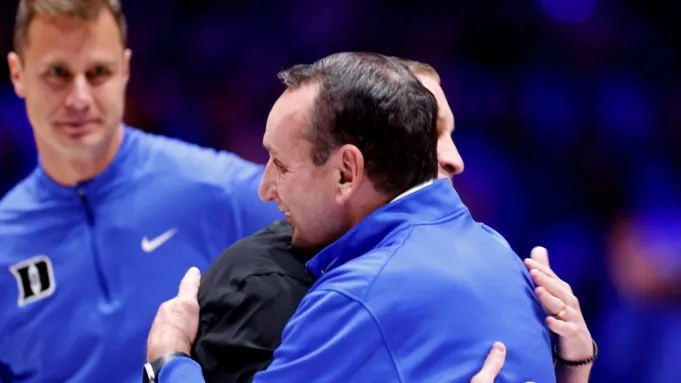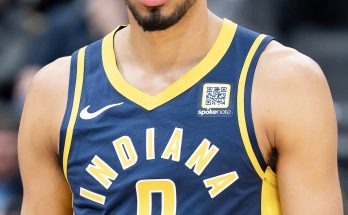For nearly half a century, Mike Krzyzewski, affectionately known as Coach K, was the face of Duke basketball. His name was synonymous with the Blue Devils’ dominance, championship triumphs, and a storied legacy that stretched far beyond the hardwood. When Coach K stepped down, many assumed the seismic shift at Duke would mean the end of an era defined solely by the basketball court’s heroics. Yet, surprisingly, the largest earner at Duke University in the athletics department is not a coach, nor is it someone who directly shapes the team’s game day fortunes. Instead, it’s a figure whose role — while pivotal — doesn’t involve drawing up plays or mentoring star athletes. This unexpected truth has sparked curiosity and even confusion among fans, analysts, and insiders alike.
To understand this surprising dynamic, one must look beyond the well-worn narrative that Duke’s financial success comes exclusively from the brilliance of its basketball program on the court. Coach K’s impact was unquestionably immense. Under his leadership, Duke won five NCAA championships, produced countless NBA stars, and became a symbol of collegiate basketball excellence. Yet, the university’s economic ecosystem, particularly in athletics, is far more complex and diversified. Revenues come from multiple streams, including broadcasting rights, sponsorship deals, merchandising, and most notably, fundraising and NIL (Name, Image, and Likeness) initiatives. The person who currently earns the most in Duke’s athletic hierarchy capitalizes on these dimensions rather than game-day coaching duties.
This biggest earner’s role revolves primarily around the business side of sports, a growing and lucrative segment that has transformed college athletics in recent years. With the advent of NIL rights for athletes, the rise of digital media platforms, and escalating corporate partnerships, the business architecture surrounding college sports is expanding rapidly. While coaches like Coach K commanded attention for their on-court success and player development, behind the scenes, a different set of professionals work tirelessly to monetize the brand, maximize revenue, and secure Duke’s long-term financial health. This professional’s salary reflects the value of these contributions, even though their job description doesn’t include coaching.
For years, the spotlight in college sports has focused overwhelmingly on head coaches and star players. After all, they are the ones filling arenas, winning trophies, and bringing media attention. But as the business of college athletics grows more complex, universities have hired top executives and specialists to manage everything from marketing and media rights negotiations to player branding and corporate sponsorships. At Duke, this evolution is evident in the payroll. The university compensates those who ensure the financial engine runs smoothly with lucrative contracts that rival or exceed those of head coaches.
This shift is part of a broader trend across NCAA programs, where athletic directors, business executives, and compliance officers have taken on outsized roles. Their work ensures programs not only remain competitive but also financially sustainable in an era where television deals can be worth hundreds of millions, and social media exposure translates directly into dollar signs. The rise of NIL has added a new layer, requiring expertise in contract negotiation, legal compliance, and marketing strategy to help athletes capitalize on their personal brands without jeopardizing NCAA eligibility.
Duke’s biggest earner in the athletics department embodies this new breed of collegiate sports professional. While the public associates Duke with Coach K’s legendary coaching career, the university’s top-paid figure is focused on crafting opportunities for athletes to profit off their own names, managing the university’s partnerships, and orchestrating strategic deals that elevate the Blue Devils brand globally. The job requires a mix of business acumen, legal savvy, marketing finesse, and a deep understanding of the rapidly evolving sports landscape. It is a role that has become indispensable in the modern era, where revenue streams have multiplied and the stakes have never been higher.
Interestingly, this individual’s compensation reflects not only their day-to-day responsibilities but also the scale of revenue they help generate. College sports programs now operate in a marketplace where broadcasting rights, merchandise sales, ticket revenues, and NIL deals collectively create a multi-billion-dollar industry. The pressure to maximize income without compromising the program’s integrity is immense. Duke’s willingness to pay top dollar for this position highlights how universities have come to value off-court leadership as much as on-court success.
What makes this arrangement particularly intriguing is the stark contrast it draws with the traditional narrative of college basketball success. Historically, the head coach was the unquestioned centerpiece of a program’s identity and financial model. They recruited the top talent, crafted winning strategies, and became household names. Now, the landscape has evolved to the point where the financial lifeblood of the program can rest in the hands of someone whose influence is felt in boardrooms and marketing campaigns rather than practice gyms and locker rooms.
Moreover, this phenomenon points to a shift in how success is measured within college athletics. No longer is it just about wins, losses, and championships. Revenue generation, brand management, and compliance with complex regulatory frameworks have become equally important. Universities like Duke recognize that sustaining a competitive program requires savvy business operations that can adapt to changing circumstances, including the ever-changing rules around NIL, media rights, and athlete compensation.
In this context, the departure of Coach K, while momentous, also serves as a reminder that Duke’s basketball program is part of a larger ecosystem. The university’s financial strategy and organizational structure are designed to weather personnel changes on the coaching staff without threatening the program’s economic stability. The highest-paid individual in Duke’s athletic department exemplifies the institutional emphasis on creating diversified revenue sources and safeguarding the program’s future.
For fans who grew up idolizing Coach K, this revelation might come as a surprise or even a shock. The name most associated with Duke basketball for decades did not just represent a winning coach but a cultural icon who embodied everything about the team’s competitive spirit. Yet, the modern sports economy necessitates a wider range of expertise, and Duke’s biggest earner is a testament to how the business side of college athletics has grown in importance.
This person’s role also involves navigating a delicate balance. On one hand, they help athletes take advantage of new opportunities afforded by NIL and emerging media platforms. On the other, they must ensure compliance with NCAA rules and institutional policies, preserving the integrity of the program. This tightrope walk requires diplomatic skill, attention to detail, and strategic foresight. It’s a role that can’t be measured by wins and losses on the court but by the financial health and reputation of the program off it.
In many ways, this shift reflects the broader evolution of college sports from purely athletic competitions to multifaceted entertainment and business ventures. Duke is not alone in this transition. Programs nationwide are investing heavily in administrative expertise to keep pace with the rapidly changing landscape. The fact that Duke’s biggest earner is not a coach but a business-oriented professional underscores how fundamental this evolution has become.
As Duke moves forward without Coach K on the sidelines, the program’s future will be shaped by a combination of on-court coaching talent and off-court business leadership. The success of the Blue Devils will depend on how well these different roles complement each other. While the head coach remains critical for athletic performance, the highest-paid individual’s work behind the scenes ensures the program can afford top coaching talent, invest in facilities, and maintain its national profile.
Ultimately, Duke’s biggest earner serves as a symbol of the changing priorities in college athletics. The days when a coach alone commanded the highest salary may be giving way to an era where business executives, marketers, and NIL specialists play an equally prominent role. This shift is not just about money; it reflects the complex, interconnected nature of modern sports programs and the diverse talents required to run them successfully.
Coach K’s legacy at Duke is secure, and his impact on college basketball is monumental. Yet, the spotlight now shines on a new kind of leader whose value lies not in coaching prowess but in business innovation and financial stewardship. This surprising reality offers a fresh perspective on how programs like Duke sustain their greatness — not only through legendary coaches but through savvy professionals who manage the lucrative, multifaceted world of collegiate athletics in the 21st century.



